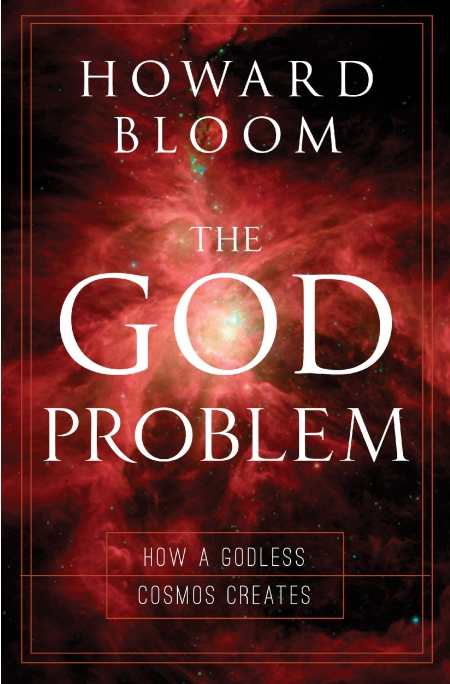The God Problem
How a Godless Cosmos Creates
Howard Bloom delves into the origins of the universe, the history of science and ideas, and the workings of creative consciousness with the depth and detail of a scholar, and he advances his thesis with the wiles and persistence of a salesman. Bloom has plenty of experience in both arenas. Having been highly educated in the sciences and recently a visiting scholar at New York University, he has written, among other works, The Lucifer Principle and Global Brain. Both books explore points of intersection of the natural and social sciences. As a young man Bloom segued off into avant-garde art, edited a heavy-metal music magazine, and became a promoter for such musical acts as Michael Jackson, Simon and Garfunkel, Bob Marley, Billy Joel, and many others. This latest result of Bloom’s skills and research, The God Problem, is a profoundly illuminating and engaging inquiry into the laws of creation.
Bloom’s message is his answer to the question suggested in his subtitle. Assuming that creation can no longer be attributed to “a bearded and bathrobed god,” how do we account for the “persistent, manic, driven, and motivated” cosmos? He attacks the fundamentals of logic, including Aristotle’s A=A and other “heresies,” and posits the roles of axioms, iteration (“of something old in a new medium”), and the relativity, or “sociality,” of things. In his survey, Bloom examines everyday items—the seed, the egg, the string, the beehive, the night sky—“as if you’ve never seen them before.” For instance, he guides readers in observing the development of the scratch mark in clay used by Babylonians to count barleycorns, showing how this crude technology came about and evolved into the study of mathematics and, six thousand years later, into Boolean algebra and the basis for computer science. He walks readers through the Big Bang and through his updating of the theory, “the Big Bagel,” a variation on the universe’s origins which accounts for his ideas about “opposites joined at the hip” and “implicit realities.”
While Bloom makes his case by breaking things down and connecting seemingly disparate elements, he hooks his readers with memoir, storytelling, and a conversational, emphatic prose style. He is forever asking and answering, repeating and embellishing. And he brings readers along for the ride. “Imagine that you are a Babylonian architect,” he suggests. As architects, readers will learn how the Babylonians laid out their brick walls at right angles yet lacked the inventiveness of the later Pythagoras, the Greek who envisioned the metaphor of the square that would inform the Euclids, Newtons, and Einsteins of succeeding generations.
Reviewed by
Joe Taylor
Disclosure: This article is not an endorsement, but a review. The publisher of this book provided free copies of the book to have their book reviewed by a professional reviewer. No fee was paid by the publisher for this review. Foreword Reviews only recommends books that we love. Foreword Magazine, Inc. is disclosing this in accordance with the Federal Trade Commission’s 16 CFR, Part 255.

